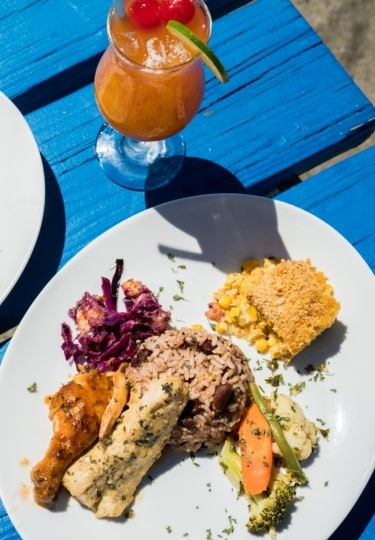Self-proclaimed foodie or not, it’s hard not to fall in love with Caribbean cuisine and its melting pot of flavors.
Traditional Caribbean food that endures today emerged several hundred years ago and from all corners of the globe. You’ll find influences from African, Indian, Asian, Cajun, and European cultures in the Caribbean.
Even if you’ve consumed many of the ingredients that make up the most popular local dishes, you’ve never had them in quite the same combinations or consistencies. Suffice to say, Caribbean cuisine is creative and packed with personality.
Here are some of the foods to try during your next trip to the Caribbean.
Jerk Chicken
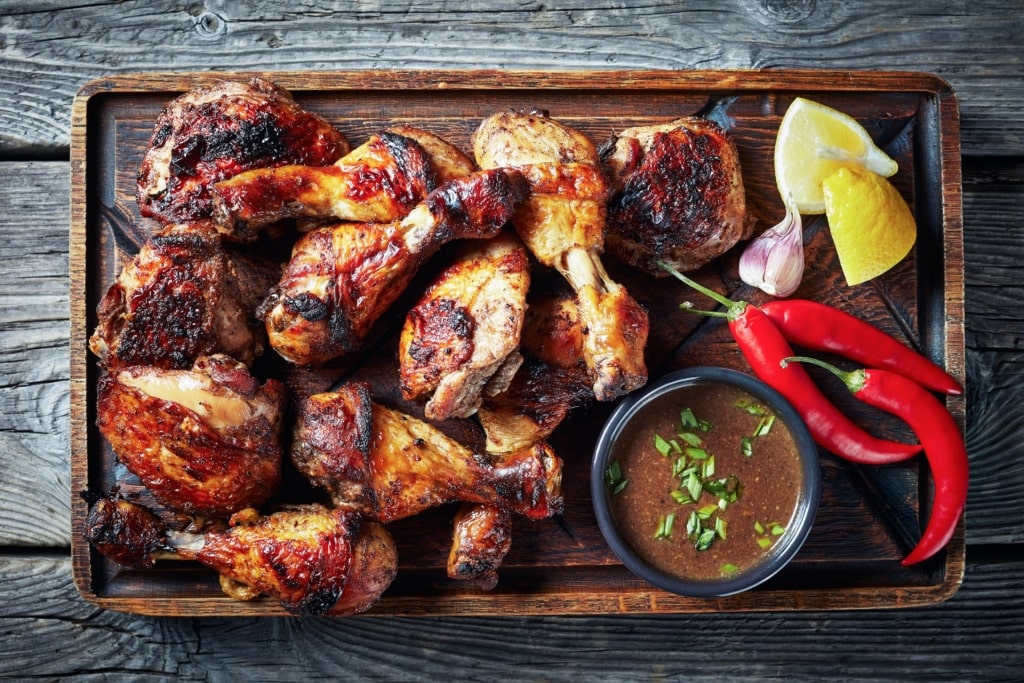
Jerk chicken
You’ll know if you’ve had jerk chicken before; it’s just that good. As one of the archetypal Caribbean foods, jerk chicken has earned its great-tasting reputation.
It’s a fairly simple dish—chicken doused in spices and hot peppers and slow-cooked over pimento wood branches—but it’s truly an art form and requires a lot of patience. Every spot serving this classic dish will have their own unique recipe for the exact spice blend that goes into the mix.
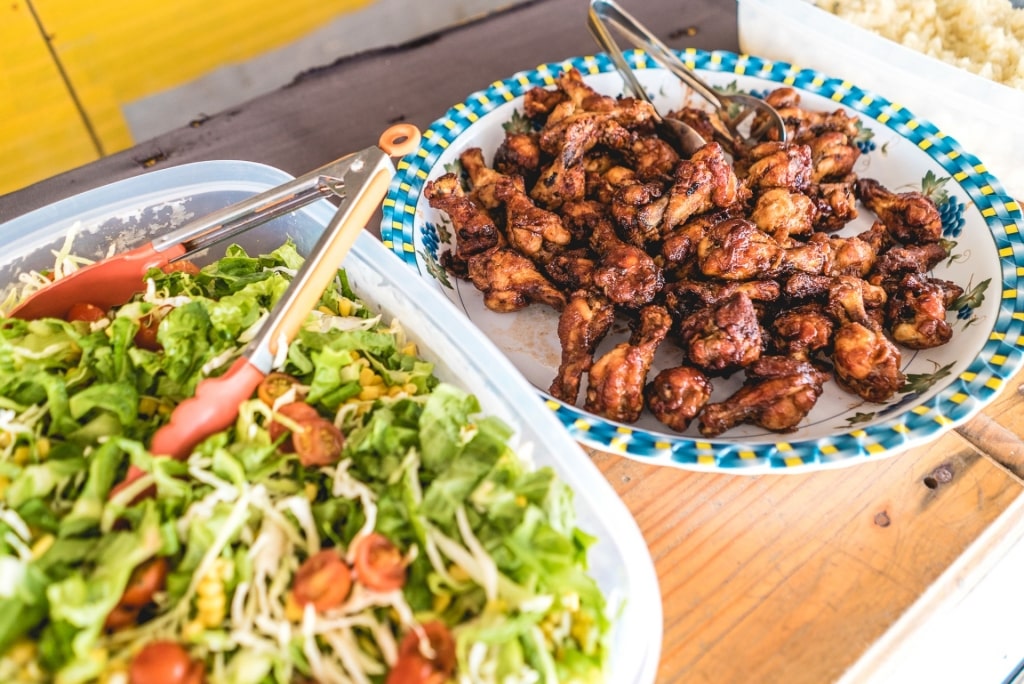
Jerk chicken
Today, jerk chicken is served almost everywhere, from restaurants to backyard grilles, and tasting it is one of the best things to do in the Caribbean. Jerk chicken is usually complemented with “festivals”, which is basically fried cornmeal, hot Scotch bonnet pepper sauce, and a cold brew like Red Stripe.
This is one dish you eat with your hands, so prepare for things to get a little messy.
While jerk chicken remains a part of daily life, its history goes way back. Several hundred years ago the Maroons, a tribe of enslaved Africans fleeing for their freedom, began barbecuing wild hogs.
They’d bury the meat into the ground as a way to smother the smoke, so as to not reveal their location to the Spanish and British forces.
Read: Caribbean Culture: What to Know Before You Go
Conch Fritters
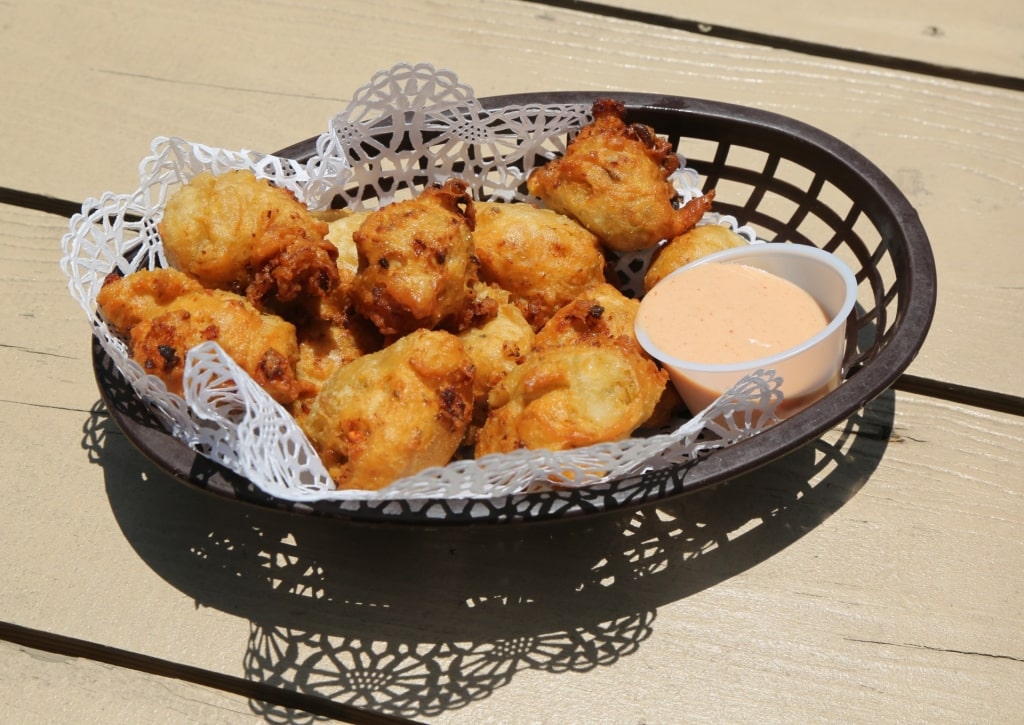
Conch fritters
Conch fritters is a typical seafood dish you’ll find on many Caribbean islands, and especially in the Bahamas.
If you’ve ever seen a conch shell, you might be so focused on its beauty that you’ll forget that there’s an actual critter inside. A conch is actually a sea snail that is difficult to find, and tough to remove from its shell.
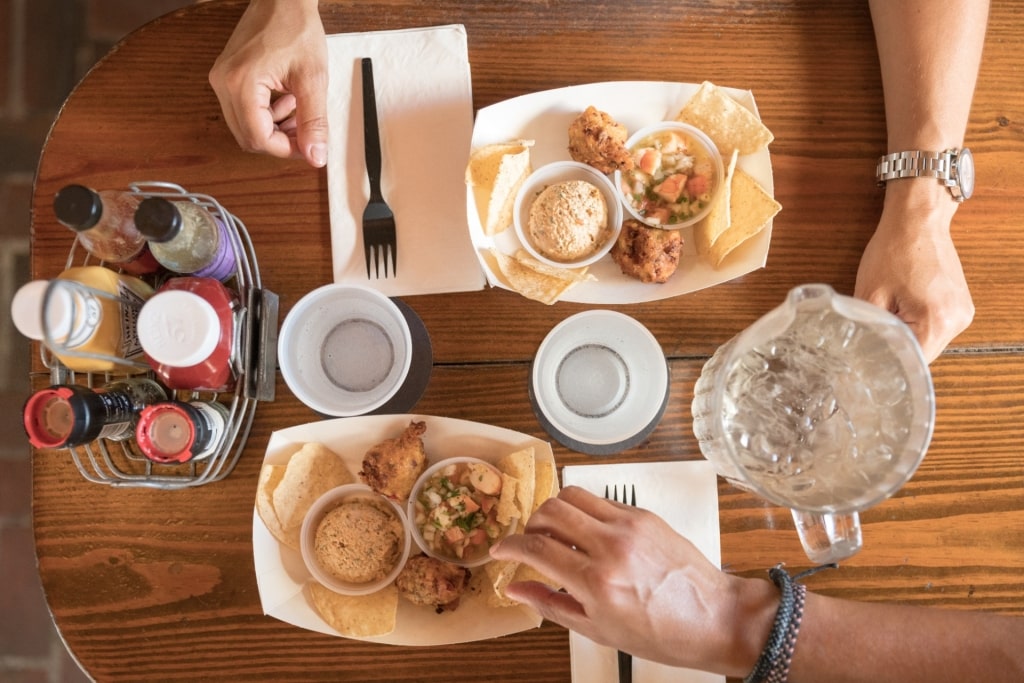
Conch fritters
To make conch fritters, the chef usually finely chops the conch meat and mixes the meat in a batter made from flour and egg. After that, they are deep-fried in oil. The meat of a sea conch is sweet and delicious, which is why this dish is a staple on almost every Caribbean-style restaurant menu.
There’s not a ton of conch meat to work with, so many recipes for conch fritters dice conch along with vegetables like onion, celery, and sweet bell pepper. They might also add garlic, hot pepper or cayenne pepper for added flavor.
Ackee and Saltfish
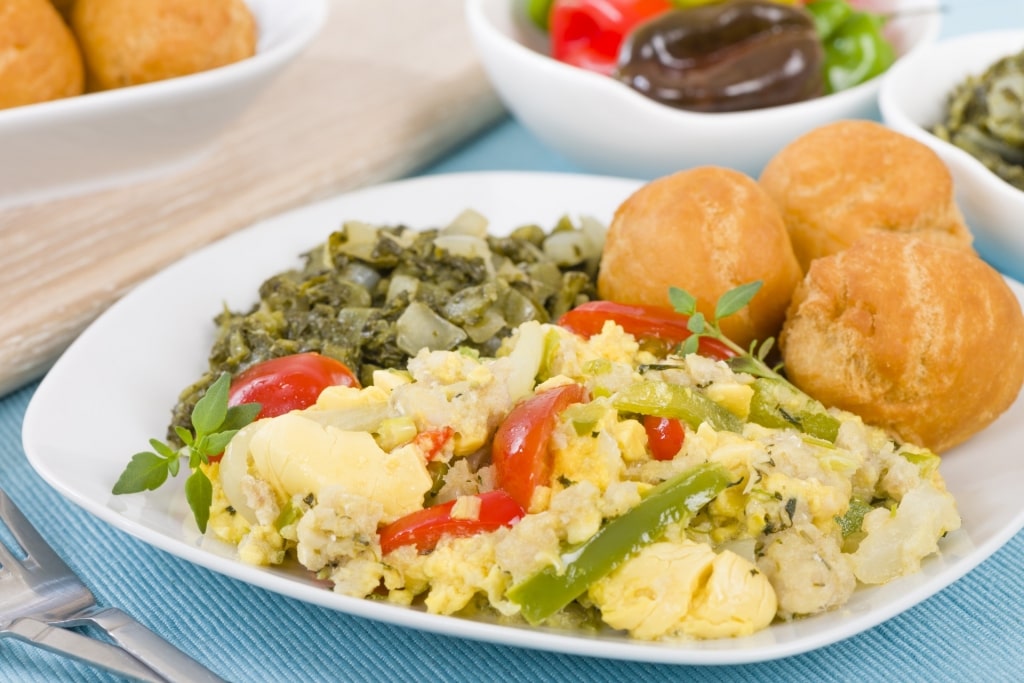
Ackee and saltfish
Don’t leave Jamaica without trying ackee and saltfish. As the country’s national dish, it’s eaten morning, noon, and night. Ackee is a fruit with thick, red skin and savory, almost nutty flavor. Native to West Africa, ackee was brought over to Jamaica with enslaved Africans.
An unripe ackee has a skin that forms a closed pod. When the fruit is ripe, the skin opens and a petal-like shape emerges. When prepared incorrectly, fresh ackee has the potential to be poisonous, so it’s best to not try to make this one on your own.
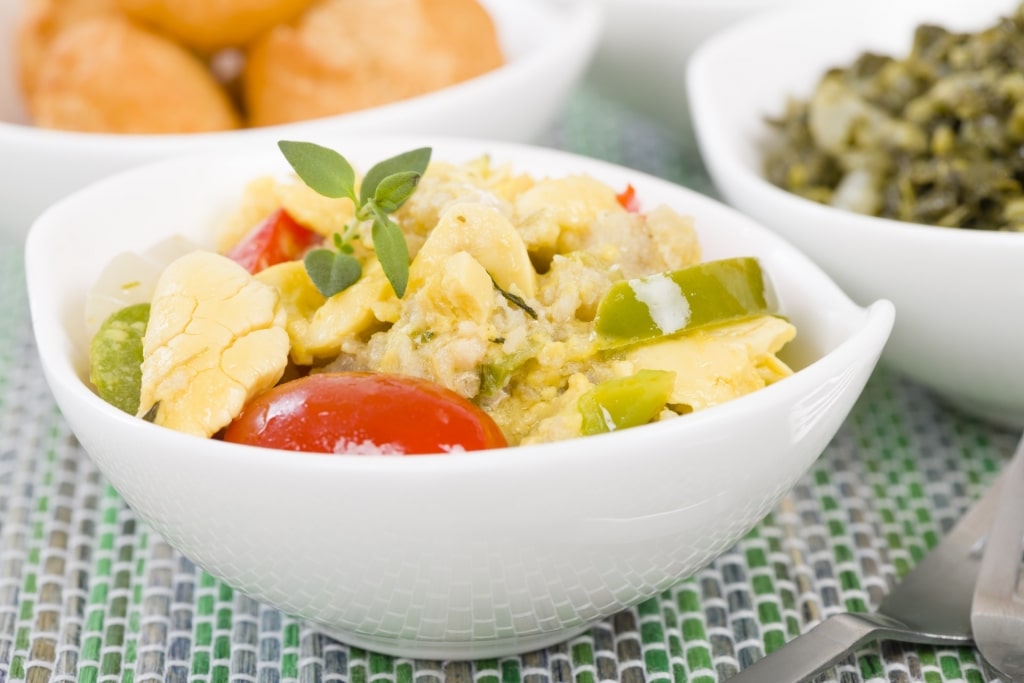
Ackee and saltfish
Those who cook this classic dish know not to pick the fruit before the skin has opened naturally. Then, the fleshy parts inside the pod—called arils—are extracted, cleaned and the ackee is boiled in salted water.
Saltfish is essentially salt cod, and it’s a staple of Caribbean cuisine. Combining the salty flavor of the fish with cooked ackee and spices, including Scotch Bonnet peppers, makes for a tasty meal.
The flavors are bold and subtle at the same time, and the soft texture of ackee contrasts well with the rougher texture of the cod.
Rice and Pigeon Peas
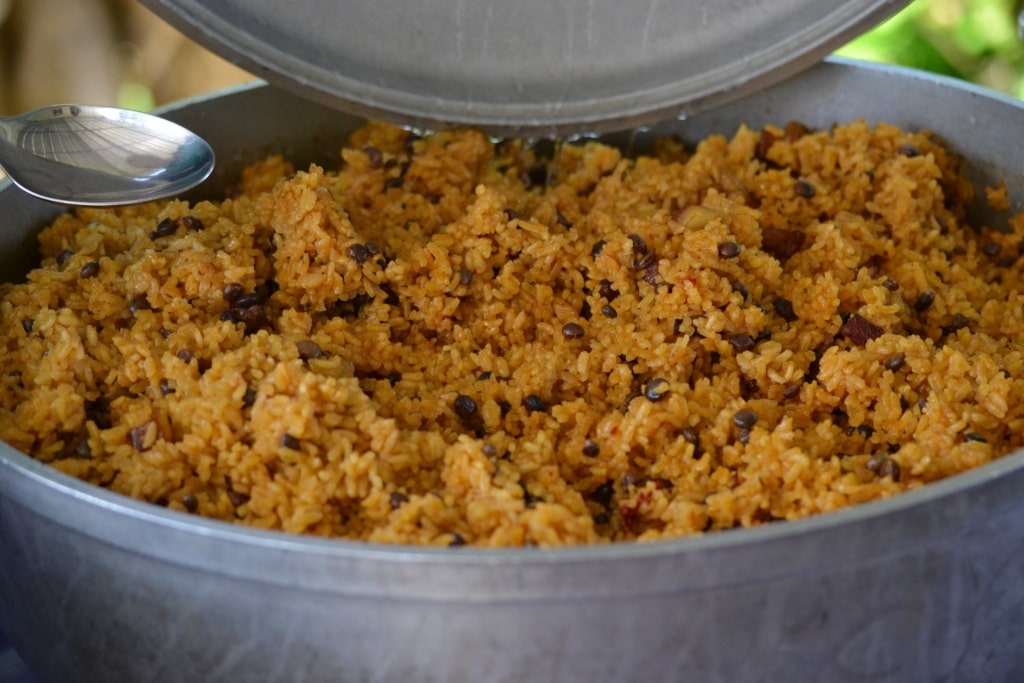
Rice and pigeon peas
Pigeon, you ask? Well, pigeon peas are beans native to Africa and they have nothing to do with pigeons. While these dried beans are typically served alongside rice and seasonings, you can also find them canned in specialty stores.
You’ll see rice ‘n’ pigeon peas on the menus across the Caribbean but especially in Barbados, the Bahamas, and Jamaica.
This classic Caribbean dish is made by simmering the peas and rice in a coconut broth and seasoning the broth with spice, garlic, onion, and sweet peppers.
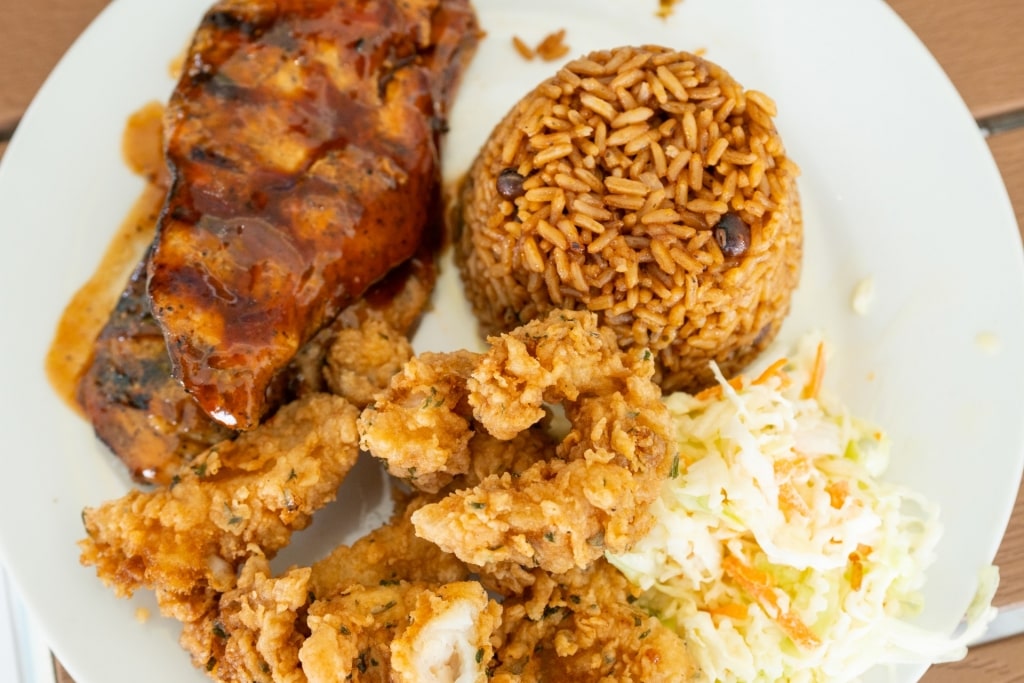
Rice and pigeon peas
It’s sometimes eaten as a meal itself, but more often than not, you’ll see this dish served alongside jerk chicken, baked pork chops, or a fish stew.
Pepperpot Stew
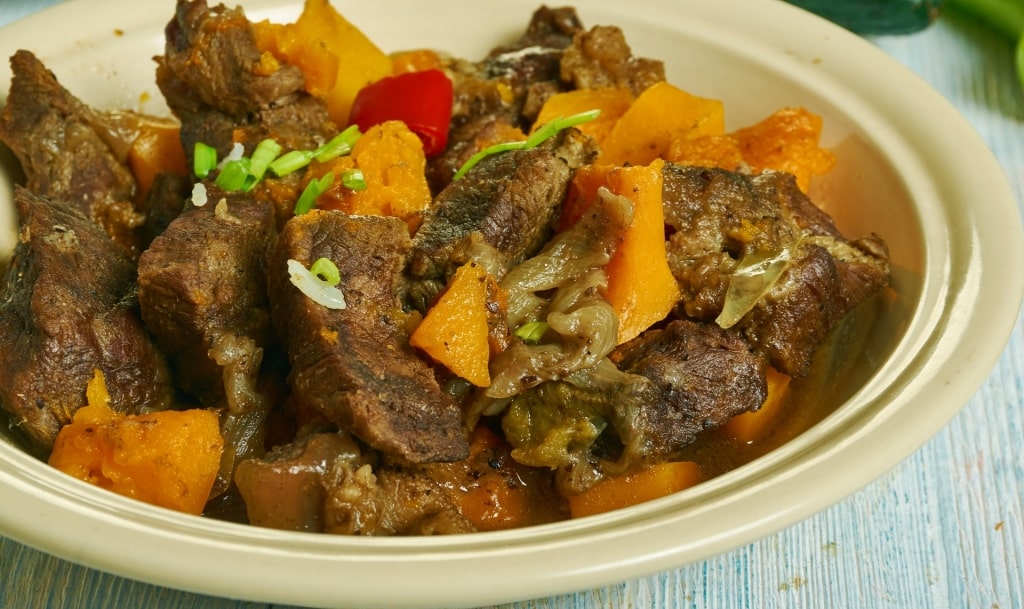
Pepperpot stew
Jamaican-style pepperpot stew is a popular sharing dish as locals in the Caribbean tend to cook large portions of it at one time and serve it to large gatherings of friends and family.
At the center of this dish is beef, which should be cooked enough to be tender. Other ingredients include onions, ginger, garlic, Scotch bonnet chili, dried thyme, berries, cinnamon, beef stock, and coconut milk. After the beef is fried, onion and other ingredients are added to the pot.
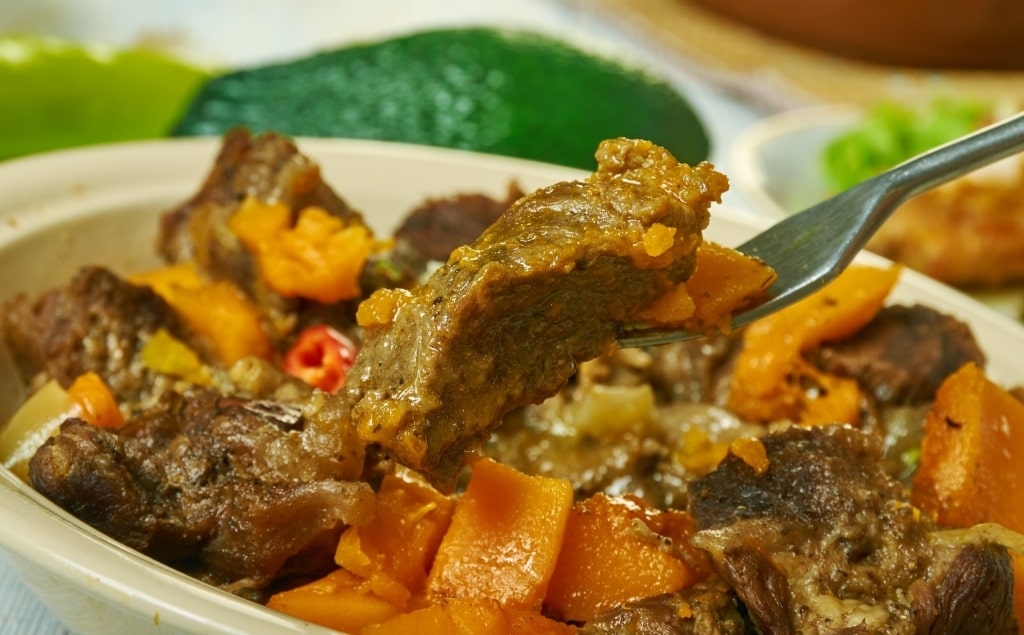
Pepperpot stew
Once it’s at a gentle simmer, it’s left there to cook uncovered for about one and a half hours. Sweet potatoes are added near the end and should cook for about 20 minutes. The last ingredient is spinach, which can be added just before serving time.
Read: Best Caribbean Islands for Food
Fungee
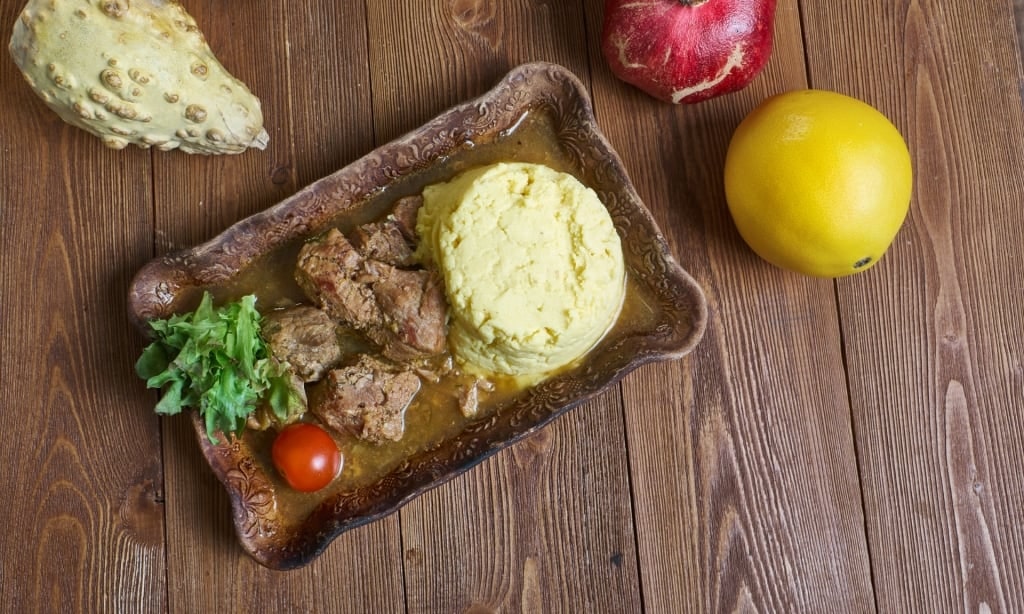
Fungee
As the national dish of Antigua and Barbuda, fungee has naturally made its way to most, if not all, of the Caribbean islands. Granted, different Caribbean nations have their own version.
Think of fungee as a bread ball or a patty-like polenta. It’s made by slow-cooking seasoned cornmeal, and the only other ingredients you need are water, salt, finely chopped okra and butter or olive oil. Other seasonings can be added in, such as garlic.
Similar to other traditional dishes in the Caribbean, the fungee recipe originates from the slave population of the time. The ingredients were inexpensive and the carbohydrates provided a healthy diet for a long day of hard labor.
Today, fungee is often served alongside pepperpot stew, giving the whole dish a combination of rich flavors and textures.
Read: The Ultimate Antigua Food Guide
Flying Fish and Cou Cou
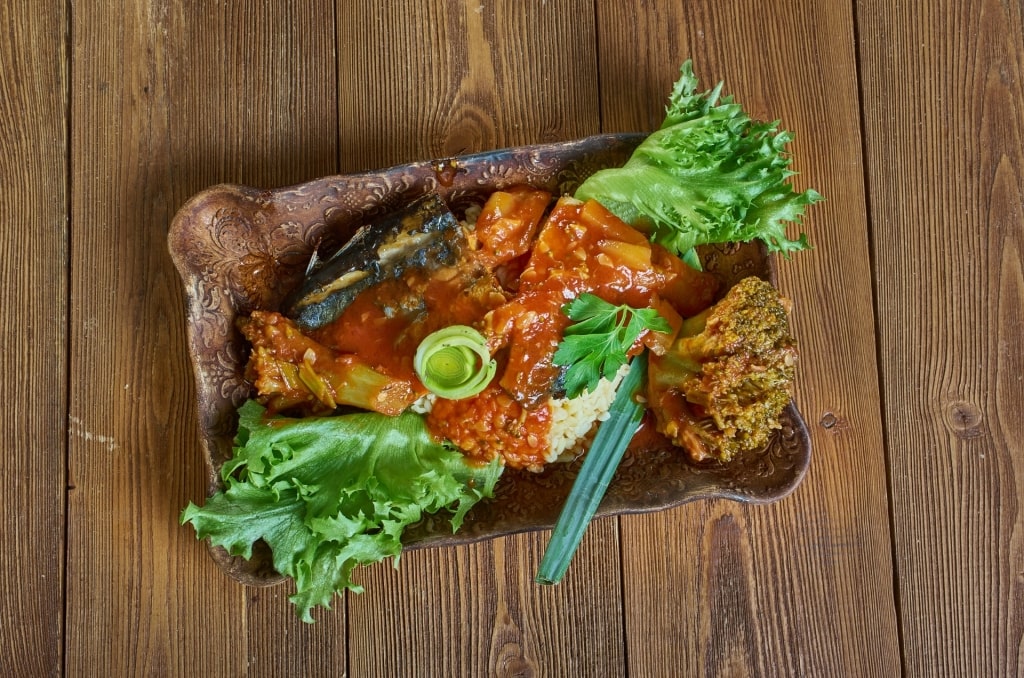
Flying fish and cou cou
Flying Fish and Cou Cou is the national dish of Barbados and fairly similar to polenta as well. In this recipe, cornmeal and okra are mixed with water and spices to form a savory porridge. The other component of Barbados’ national dish is flying fish.
The fish is steamed, seasoned and served alongside the cou cou. This Bajan dish is one of the spicier dishes on this list, but well worth the challenge to your palate.
Cracked Conch
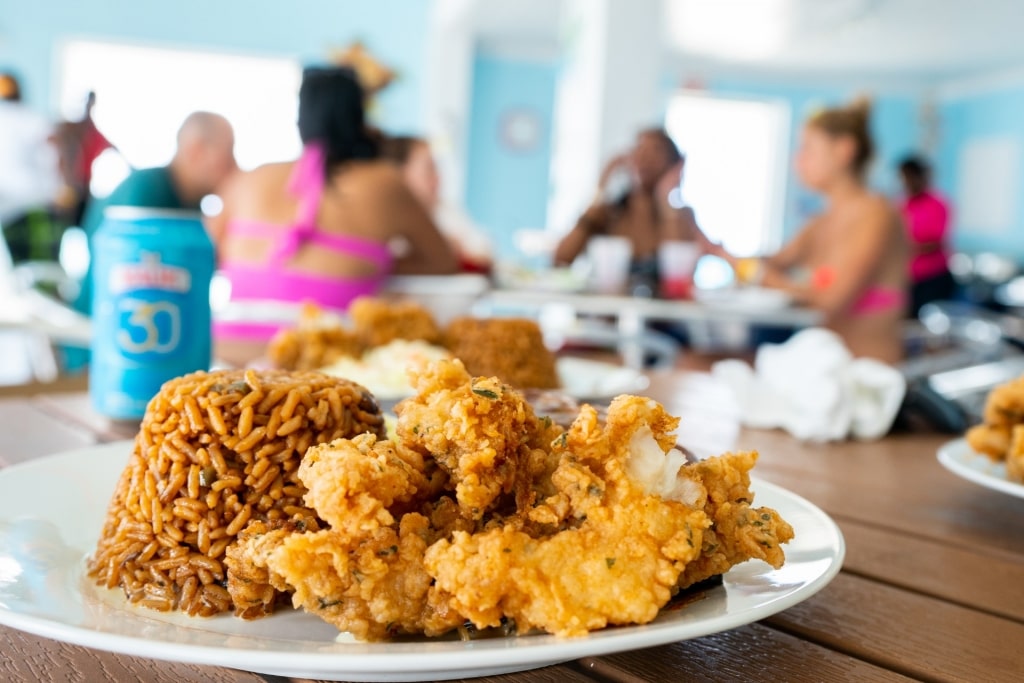
Cracked conch
If you’re craving some flavorful Caribbean seafood, cracked conch hits the spot. This popular Bahamian dish is usually paired with French fries or rice and pigeon peas. After the conch meat is breaded in a flour-based batter, it’s deep fried until crispy and golden-colored.
Since conch meat is tougher than many other types of meat, this is a good way to tenderize it and make it less chewy. You’ll spot this on a lot of restaurant menus, either as an appetizer or main.
Read: Best Food in Aruba
Mofongo
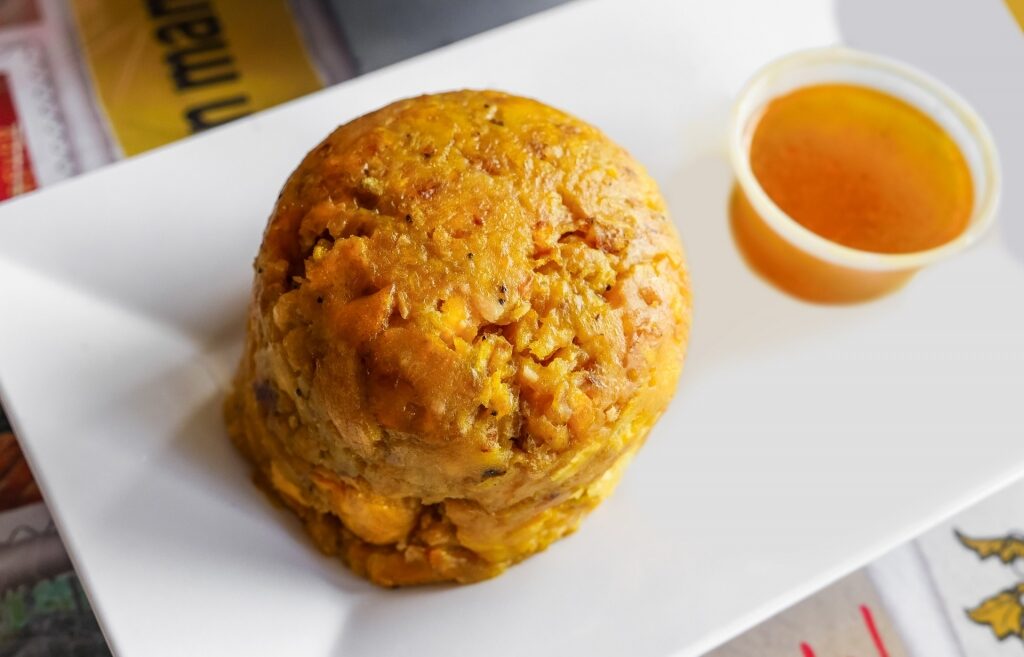
Mofongo
Mofongo is a Puerto Rican dish with African influences. It’s made from unripened plantains that are mashed, flavored with ingredients like bacon or chicharrón, and bathed in a broth.
Depending on where in Puerto Rico you are traveling, you’ll notice that every region puts its own spin on making mofongo.
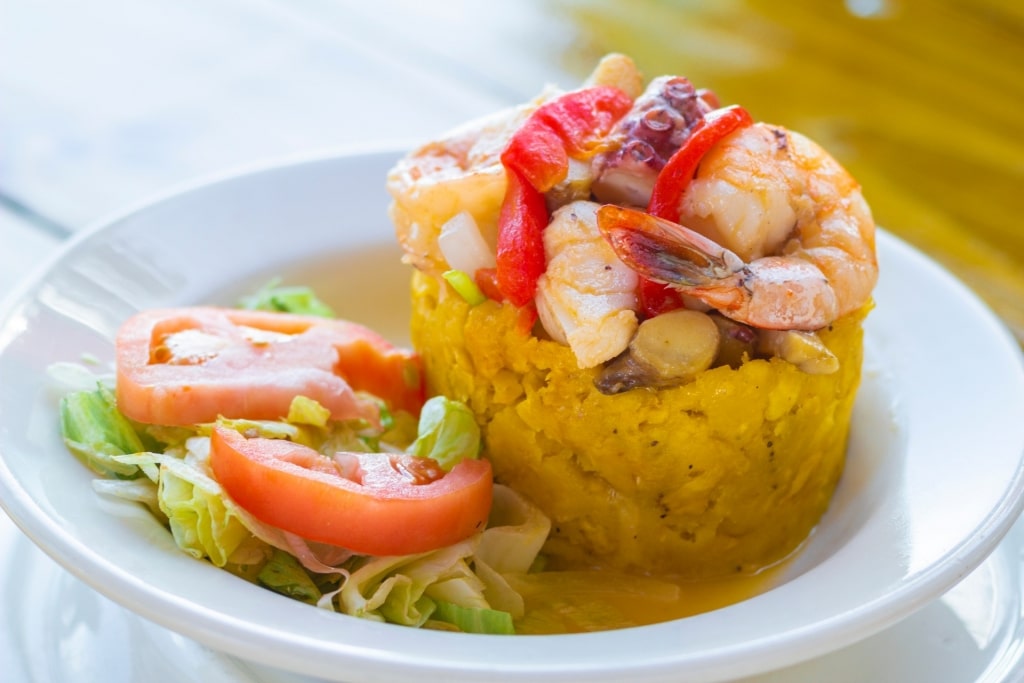
Mofongo relleno
For example, some restaurants will mix plantains with other starchy vegetables or they might mix it with fillings like seafood (this is called mofongo relleno). Best of all, it’s easy to make at home and takes less than 15 minutes, depending on how fancy you want to get.
Callaloo
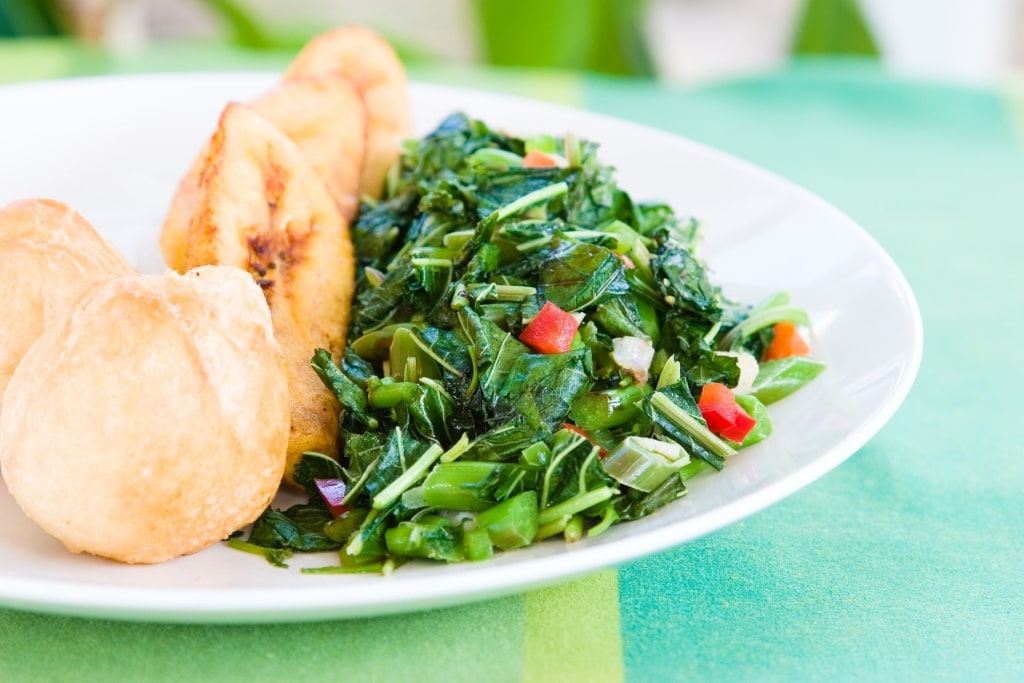
Callaloo
As satisfying as fried food is, always remember to get in your greens. Jamaican Callaloo is a healthy side dish for any meal, including breakfast.
Callaloo itself is a type of leafy green that can be substituted for spinach, and it’s traditionally cooked alongside onion (including green onion), tomatoes, Scotch bonnet pepper, and thyme.
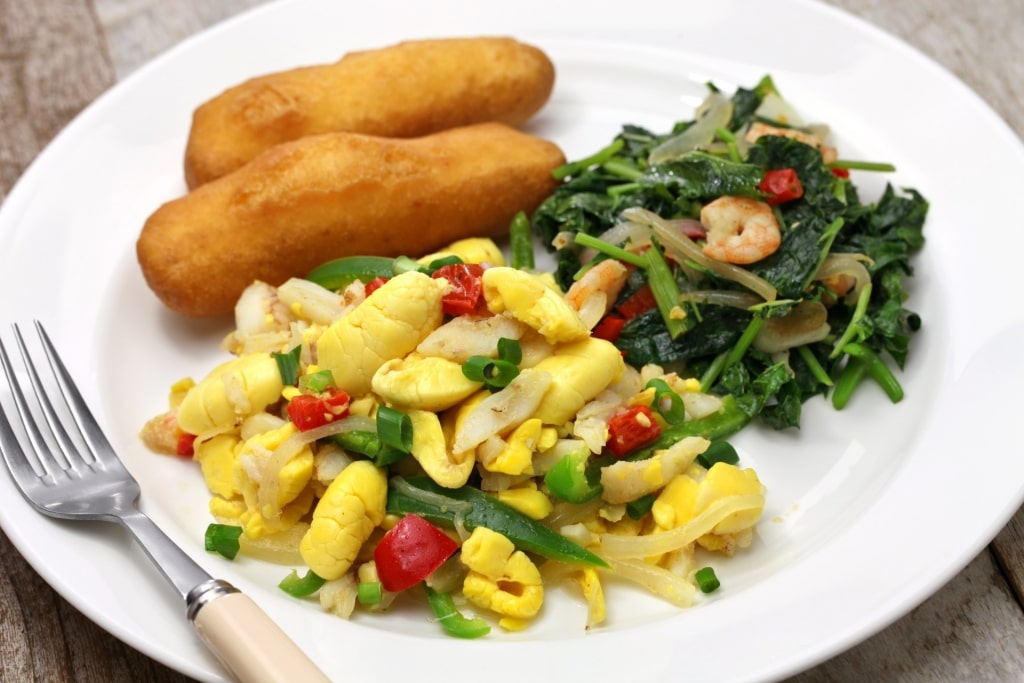
Callaloo
Alternatively, you can cook callaloo with saltfish and serve it with rice or veggies. As a nutrient-dense leafy green, you can also add callaloo to soups, use it as a filling for savory pastries, or as part of your morning green juice.
Roti
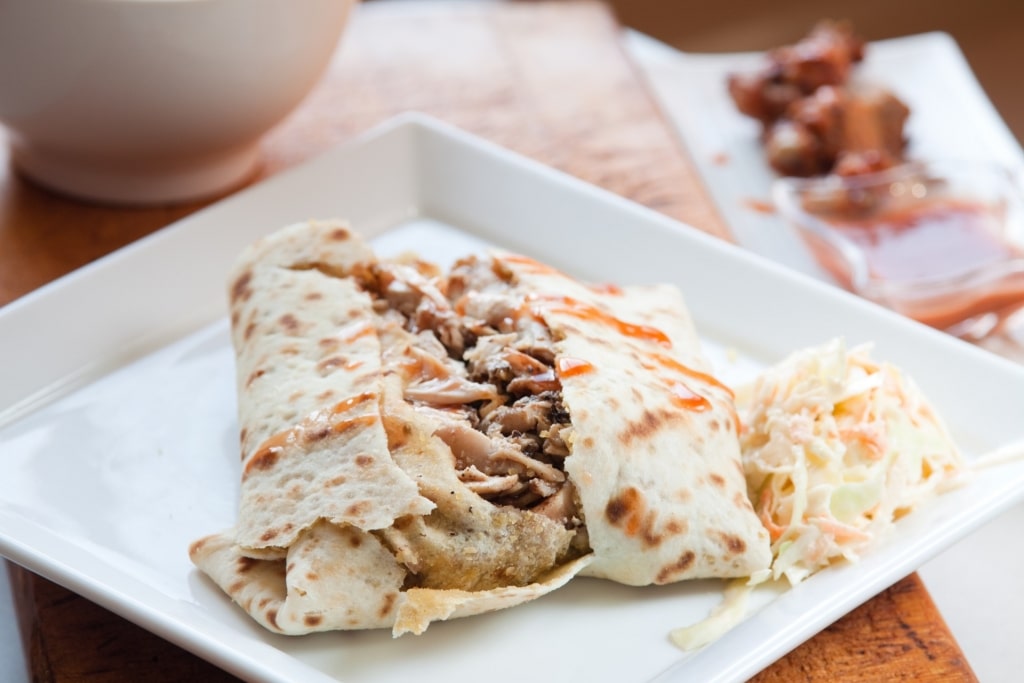
Roti
The best way to think of roti is to visualize a sandwich wrap. Not so different from Indian naan, roti has a soft texture and is thin and flaky.
Roti is made from wholewheat flour, salt, and butter and is cooked on a cast-iron pot. You’ll usually find rotis with curried or stewed meat, or with vegetables.
In Trinidad and Tobago, the locals refer to the ingredients inside the roti as a “tarkari”. Like a panini or sandwich, a roti is a smart and savory meal on the go if you’re in a rush, or just if you need a mid-afternoon protein snack.
Plantains
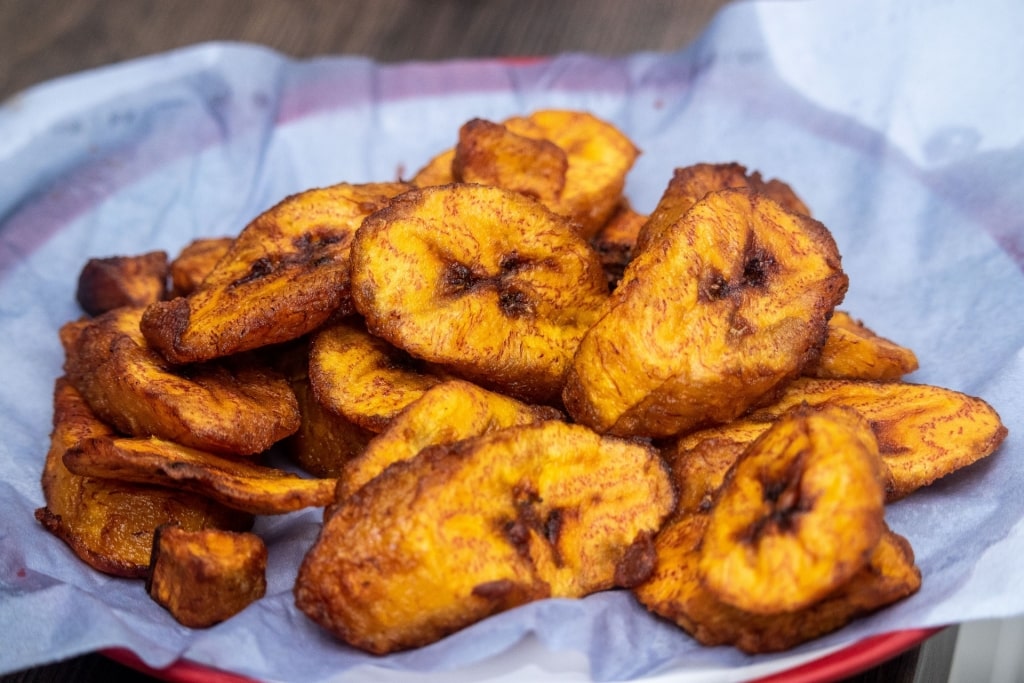
Plantains
Fried plantains are a staple in many Caribbean dishes and it’s easy to see why. They are sweet, like bananas, but without that unique banana flavor. They also caramelize as they turn brown, are easy to cook, and easy to eat thanks to their soft texture.
Plantains should be semi-ripe in order to get the taste and consistency just right, and the only other ingredients you need is vegetable oil and maybe a dash of salt.
Depending on how hot your stove is, you can usually fry the plantains for about 15 minutes. Turn them as needed until they are golden brown and try not to overcook them; this way the texture remains perfect.
Read: Best Food in Dominica
Coco Bread
Coco bread is probably the closest thing Jamaica has to a burger bun, with one major difference. This bread contains a bit of coconut milk, which gives it a starchy texture and slightly sweet taste. Without the key ingredient of coconut milk, this bread would taste quite similar to American dinner rolls.
Many Jamaicans split coco bread in half and stuff a patty inside. In addition to coconut milk, a typical recipe includes flour, salt, unsalted butter, brown sugar and rapid rise yeast. Look for street food stalls selling coco bread filled with meat, or served alongside callaloo, ackee, or cheese.
Tamarind Balls
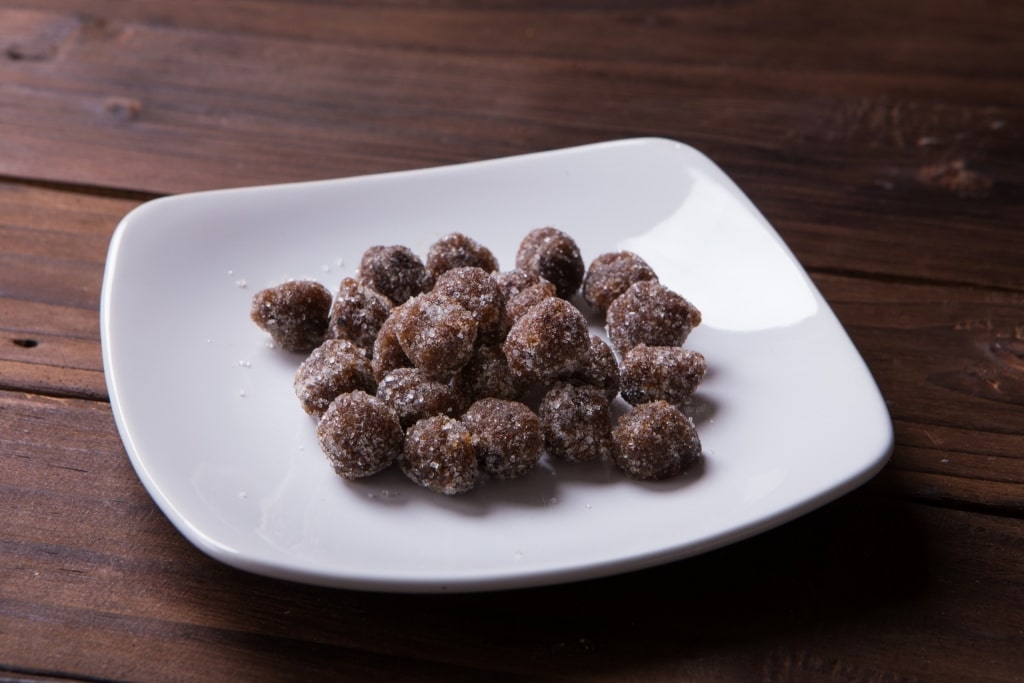
Tamarind balls
Most often seen in Jamaica and Trinidad, tamarind balls are made with the sticky flesh of the tamarind fruit and rolled with brown sugar to form balls. The savory taste of tamarind paired with the sweet flavor of brown sugar makes for a delicious, natural and preservative-free dessert.
There are some variations to this simple recipe to look for. For example, sometimes people create spicy versions by adding hot pepper into the mix. Another option is to boost the flavor with some Jamaican rum. The alcohol does dissolve after some time, but the flavor remains.
Read: Best Caribbean Rum Distilleries, Tours & Tastings
Chimichurri Burger
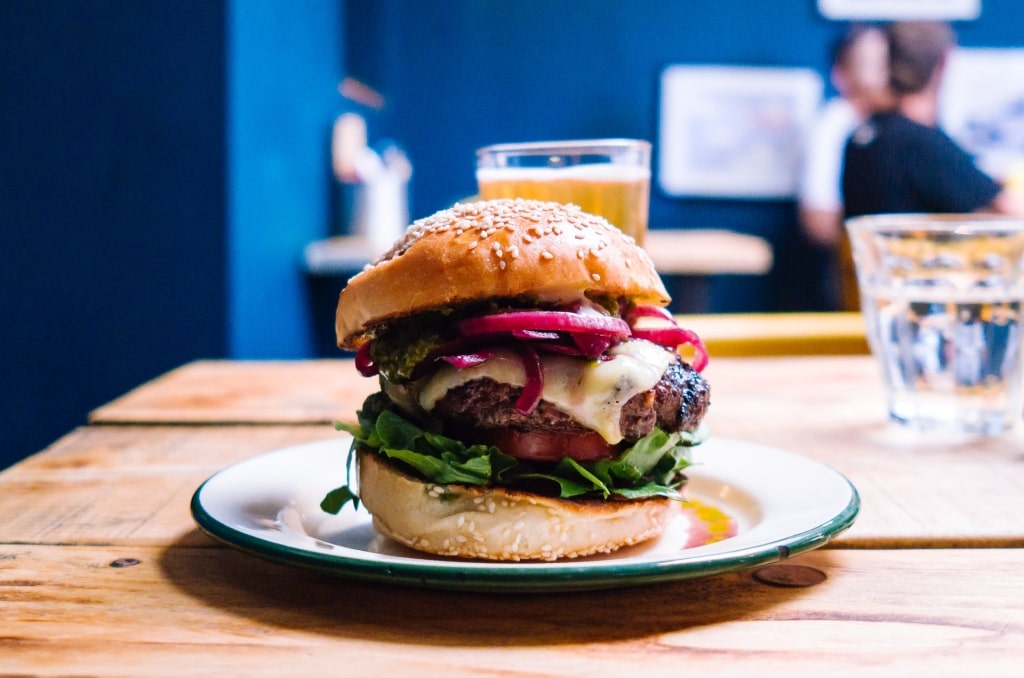
Chimichurri burger
When traveling through the Dominican Republic, make sure to get your hands on a chimichurri burger.
As you might guess, the main difference between a burger in the Dominican Republic and a burger you’d find in the U.S. is the addition of chimichurri and other spices like oregano, parsley, garlic, and red pepper flakes.
Read: The Ultimate Dominican Food Guide
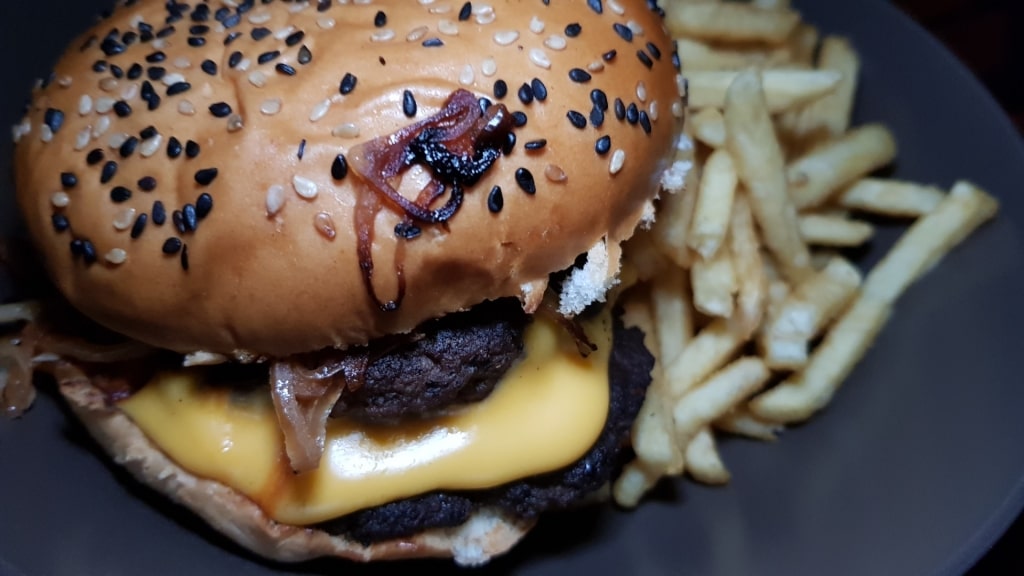
Chimichurri burger
It’s common to see this dish both in restaurants and served by food vendors, as it’s easy to eat on the go. Like most burgers, it’s delicious with added mayonnaise, greens like cabbage or lettuce, tomatoes, and onions. Wash down your spicy chimichurri burger with an ice-cold beer for a true Caribbean flavor.
Read: Delicious Caribbean Cocktails to Taste
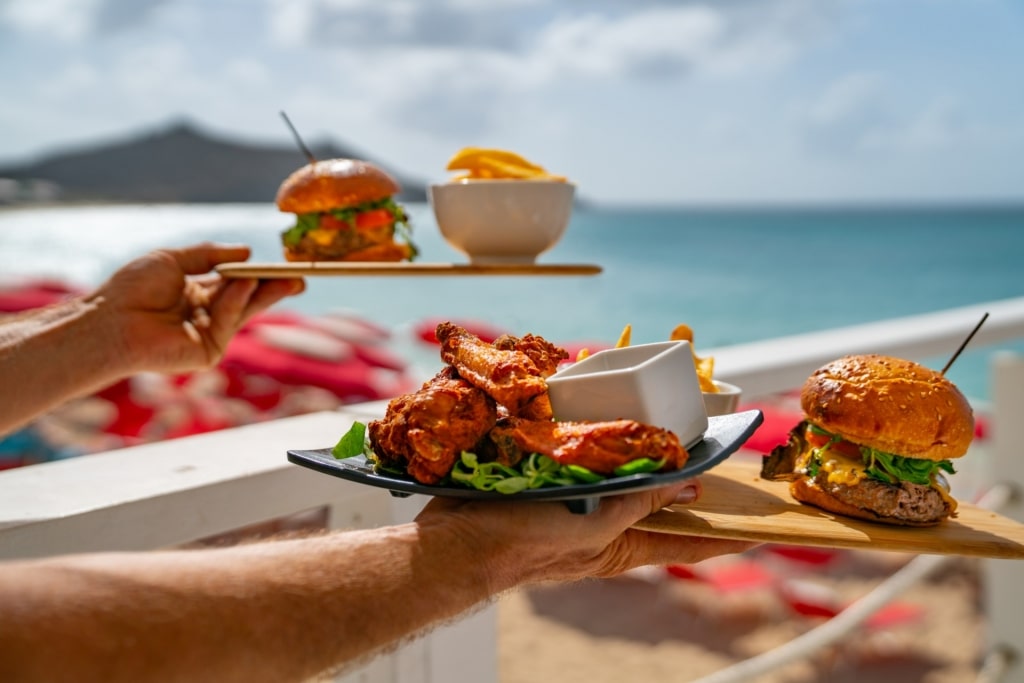
Caribbean
Get a taste of the islands on a cruise to the Caribbean with Celebrity Cruises. Browse itineraries on our website and book your next adventure today.
